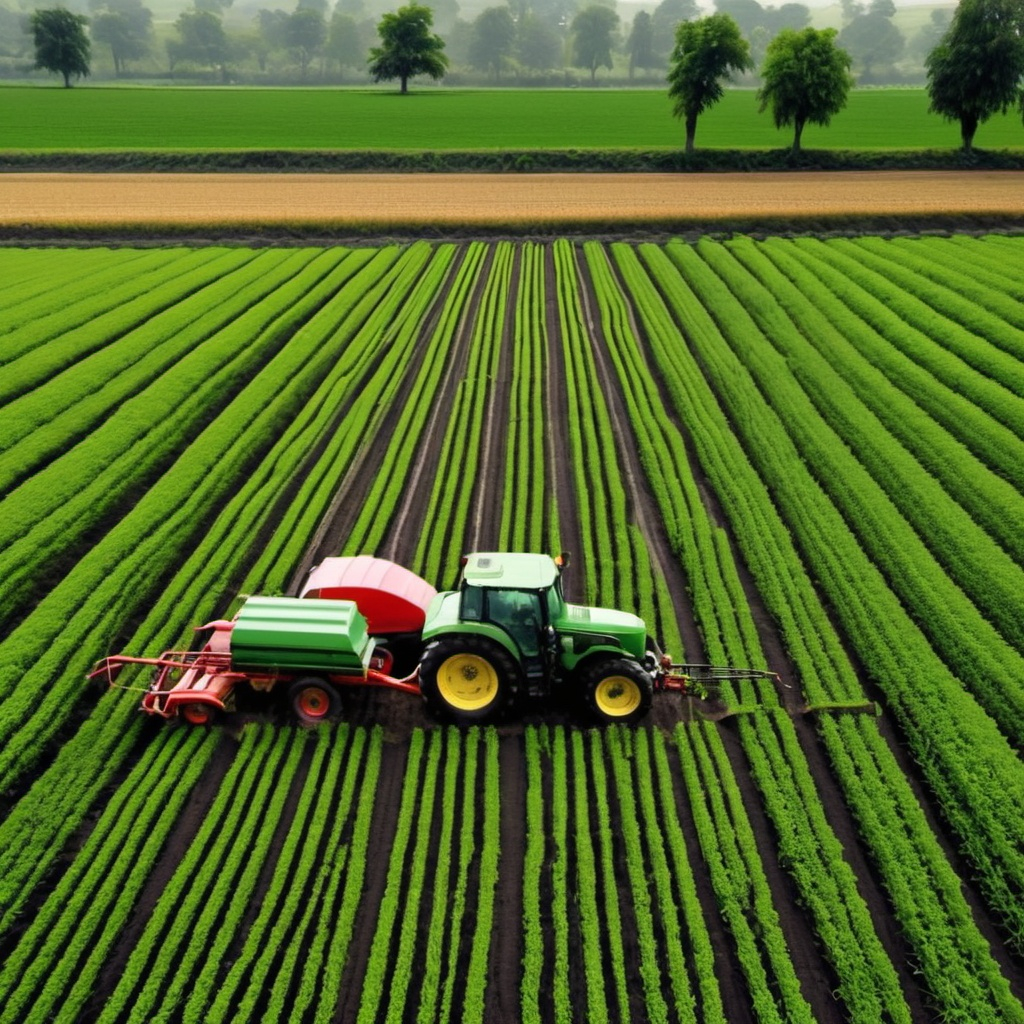
Agriculture is the backbone of many economies, providing food, raw materials, and livelihoods to a large portion of the global population. Over time, agricultural practices have evolved, adapting to the environment, technological advancements, and societal needs. These diverse methods can be broadly categorized into several types, each with its own unique approach to land use, crop cultivation, and resource management.
1. Subsistence Agriculture
Subsistence agriculture is a type of farming where the primary goal is to produce enough food to meet the needs of the farmer and their family. This method is prevalent in developing countries, where small-scale farmers rely on traditional tools and methods. The focus is on growing staple crops like rice, wheat, maize, and vegetables. Livestock may also be raised to support the household. Surplus production is minimal, and any extra produce is often sold locally or bartered.
2. Commercial Agriculture
In contrast to subsistence farming, commercial agriculture is aimed at producing crops and livestock for sale in markets, both domestically and internationally. This type of agriculture involves larger-scale farming operations, modern machinery, and technology to maximize production. Common examples include the cultivation of cash crops such as cotton, tobacco, tea, and coffee. Commercial farming is highly mechanized and often monocultural, focusing on a single type of crop over vast areas.
3. Shifting Cultivation
Shifting cultivation, also known as slash-and-burn agriculture, is a traditional practice where farmers clear a piece of land by cutting down trees and burning the vegetation. Crops are planted on the cleared land for a few years until the soil’s fertility declines. The farmer then moves to another area to repeat the process while the previously farmed land regenerates. This practice is common in tropical rainforests, but its environmental impact has raised concerns, particularly related to deforestation and soil degradation.
4. Intensive Agriculture
Intensive agriculture focuses on maximizing crop yield per unit of land by using high inputs of labor, fertilizers, pesticides, and technology. This method is often applied in densely populated areas where arable land is limited. Intensive farming includes both plant and animal production, with practices like greenhouse farming and feedlots for livestock. Although it is highly productive, intensive agriculture can lead to environmental issues such as soil degradation, water pollution, and loss of biodiversity.
5. Extensive Agriculture
Extensive agriculture, unlike intensive methods, uses larger plots of land with lower inputs of labor and capital. This type of farming is typically practiced in regions where land is abundant but population density is low, such as in parts of Australia, Canada, and the United States. It is most commonly associated with livestock grazing, though it can also involve crop cultivation. The lower intensity of land use means there is less environmental pressure, but the overall productivity per acre is lower than in intensive agriculture.
6. Nomadic Herding
Nomadic herding, also called pastoralism, is a form of agriculture where people move with their livestock in search of fresh pastures and water. This practice is common in arid and semi-arid regions like the Sahara Desert, parts of the Middle East, and Central Asia. Herders keep animals such as camels, goats, sheep, and cattle, which provide milk, meat, wool, and hides. The mobility of nomadic herding helps in managing scarce resources, though modern challenges like climate change and land ownership disputes have affected its sustainability.
7. Plantation Agriculture
Plantation agriculture is characterized by the large-scale production of a single crop, typically in tropical and subtropical regions. These plantations often grow cash crops such as sugarcane, rubber, palm oil, and bananas, primarily for export markets. The land is usually owned by large corporations or wealthy individuals, and the farming methods employed are often labor-intensive. Plantations have been historically associated with colonial economies and still play a significant role in global trade.
8. Organic Farming
Organic farming is an agricultural system that seeks to produce food in a sustainable and environmentally friendly manner. It avoids the use of synthetic fertilizers, pesticides, and genetically modified organisms (GMOs), relying instead on natural processes such as composting, crop rotation, and biological pest control. Organic farming has gained popularity due to growing consumer demand for healthier food options and concerns over the environmental impacts of conventional agriculture. While organic yields may be lower than conventional farming, the focus on sustainability and biodiversity makes it an appealing option for environmentally conscious consumers.
9. Mixed Farming
Mixed farming is a system where a farmer engages in both crop cultivation and livestock rearing on the same piece of land. This type of agriculture helps diversify income sources and reduce risk, as the farmer is not reliant on a single product. The waste from animals can be used as fertilizer for crops, creating a more sustainable cycle. Mixed farming is common in areas where both animal and crop production are viable, providing economic stability and environmental benefits.
10. Agroforestry
Agroforestry combines agriculture and forestry practices by integrating trees and shrubs into crop and livestock systems. This method helps improve biodiversity, soil fertility, and water retention while providing additional income through the production of timber, fruits, nuts, and other forest products. Agroforestry is increasingly recognized for its ability to combat soil erosion, enhance carbon sequestration, and support sustainable land use.
11. Aquaculture
Aquaculture, or fish farming, is the cultivation of aquatic organisms such as fish, shellfish, and seaweed in controlled environments. As global demand for seafood rises and natural fish stocks decline, aquaculture has become an essential component of the food supply. It can be practiced in freshwater, saltwater, or brackish environments, and is often integrated with other farming systems. While aquaculture offers significant economic benefits, it also faces challenges like water pollution and habitat destruction if not managed sustainably.
Each type of agriculture plays a vital role in feeding the world’s population, sustaining economies, and shaping the landscape.